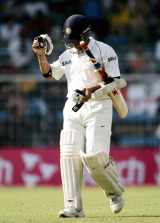You're right in thinking that there have not been very many recent Australian players who were born elsewhere. One from the current team is
Andrew Symonds, who was born in Birmingham in England: the only other one since
Kepler Wessels is the tall left-armer
Brendan Julian, who was born in New Zealand.
Ken MacLeay, who played 16 one-day internationals for Australia in the 1980s (including several in the 1983 World Cup) but no Tests, was born in Wiltshire in England. The most notable Australian Test player who was born outside the country is probably
Clarrie Grimmett, the master legspinner of the 1920s and 1930s, who was born in New Zealand. In all 21 players born outside Australia have represented them in Tests - six in the very first Test of all, at Melbourne in 1876-77, including
Charles Bannerman, the scorer of Test cricket's first century - he was born in Woolwich in south-east London. For the record, the others not previously mentioned are George Alexander, Hanson Carter, William Cooper, Tony Dell, John Hodges, Tom Kendall, Percy McDonnell, Eric Midwinter and Harry Musgrove (all born in England), Bransby Cooper and Rex Sellers (India), Tom Horan and Thomas Kelly (Ireland), Tom Groube (New Zealand), Archie Jackson (Scotland) and Dav Whatmore (Sri Lanka).

